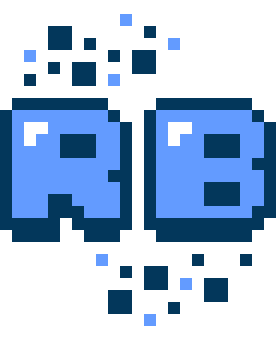|
|
Method
|
public TMXLayerLoadState LoadLayerChunk(string sourceLayerName, int destinationLayer, Vector2i chunkOffset, Vector2i destPos)
|
|
public TMXLayerLoadState LoadLayerChunk(string sourceLayerName, int destinationLayer, Vector2i chunkOffset, Vector2i destPos, PackedSpriteID [] packedSpriteLookup)
|
|
public TMXLayerLoadState LoadLayerChunk(string sourceLayerName, int destinationLayer, Vector2i chunkOffset, Vector2i destPos, PackedSprite [] packedSpriteLookup)
|
|
public TMXLayerLoadState LoadLayerChunk(string sourceLayerName, int destinationLayer, Vector2i chunkOffset, Vector2i destPos, FastString [] packedSpriteLookup)
|
|
public TMXLayerLoadState LoadLayerChunk(string sourceLayerName, int destinationLayer, Vector2i chunkOffset, Vector2i destPos, string [] packedSpriteLookup)
|
Parameters
|
sourceLayerName
|
string
|
Name of the TMX layer. Duplicate layer names are not supported
|
|
destinationLayer
|
int
|
The RetroBlit layer to load into
|
|
chunkOffset
|
Vector2i
|
Chunk offset in the TMX layer in tile coordinates
|
|
destPos
|
Vector2i
|
Destination position in the RetroBlit layer in tile coordinates
|
|
packedSpriteLookup
|
PackedSpriteID []
|
Lookup table for translating TMX tile indexes to packed sprites
|
Returns
TMXLayerLoadState
Layer loading state
DescriptionLoad a TMX map layer chunk from an infinite map. For standard fixed maps use TMXMapAsset.LoadLayer instead. There are various asset sources supported: - Resources - Synchronously loaded TMX Map assets from a Resources folder. This was the only asset source supported in RetroBlit prior to 3.0.
- ResourcesAsync - Asynchronously loaded TMX Map assets from a Resources folder.
- WWW - Asynchronously loaded TMX Map assets from a URL.
- AddressableAssets - Asynchronously loaded TMX Map assets from Unity Addressable Assets.
The layer into which the layer chunk tile data is loaded if specified by destinationLayer. The source is specified by chunkOffset, and the destination position of the tile data is specified with destPos. The sprite sheet or sprite pack can be specified for this layer by passing spriteSheet parameter, or later by RB.MapLayerSpriteSheetSet. If a sprite pack is specified then a lookup array can be passed using packedSpriteLookup, which will help RetroBlit translate from tilemap sprite indices to packed sprites. Besides tile sprite information TMXMapAsset.LoadLayerChunk also loads TMXProperties for each tile. These properties can be set inside of Tiled. This can be very useful for defining gameplay affecting properties such as whether a particular tile is "blocking". Exampleconst int LAYER_TERRAIN = 0;
TMXMapAsset tmxMap = new TMXMapAsset;
Vector2i cameraPos
Vector2i topLeftChunk;
void Initialize() {
tmxMap.Load("tilemaps/world");
}
void Render() {
var chunkPixelSize = new Vector2i(
RB.MapChunkSize.width * RB.SpriteSize(0).width,
RB.MapChunkSize.height * RB.SpriteSize(0).height);
var newTopLeftChunk = new Vector2i(
cameraPos.x / chunkPixelSize.width,
cameraPos.y / chunkPixelSize.height);
if (newTopLeftChunk != topLeftChunk) {
var shift = topLeftChunk - newTopLeftChunk;
RB.MapShiftChunks(0, shift);
for (int cy = 0; cy <= (RB.DisplaySize.height / chunkPixelSize.height) + 1; cy++) {
for (int cx = 0; cx <= (RB.DisplaySize.width / chunkPixelSize.width) + 1; cx++) {
var chunkPos = new Vector2i(cx * RB.MapChunkSize.x, cy * RB.MapChunkSize.y);
var mapPos = new Vector2i(
newTopLeftChunk.x * RB.MapChunkSize.x,
newTopLeftChunk.y * RB.MapChunkSize.y) + chunkPos;
mapPos.x = mapPos.x % tmxMap.size.width;
if (RB.MapChunkEmpty(LAYER_TERRAIN, chunkPos)) {
tmxMap.LoadTMXLayerChunk("Terrain", LAYER_TERRAIN, mapPos, chunkPos);
}
}
}
topLeftChunk = newTopLeftChunk;
}
var newCameraPos = new Vector2i(
cameraPos.x % chunkPixelSize.width,
cameraPos.y % chunkPixelSize.height);
cameraPos = newCameraPos;
RB.CameraSet(cameraPos);
RB.DrawMapLayer(LAYER_TERRAIN, new Vector2i(x + 1, y + 1));
RB.CameraReset();
} |
See AlsoTMXMapAsset.Load
TMXMapAsset.LoadLayerChunk
RB.MapChunkEmpty
RB.MapShiftChunks
RB.Result
RB.AssetStatus
RB.AssetSourceSee DocsFeatures - Tilemaps
Features - Tiled TMX Support
Features - Asynchronous Asset Loading |
